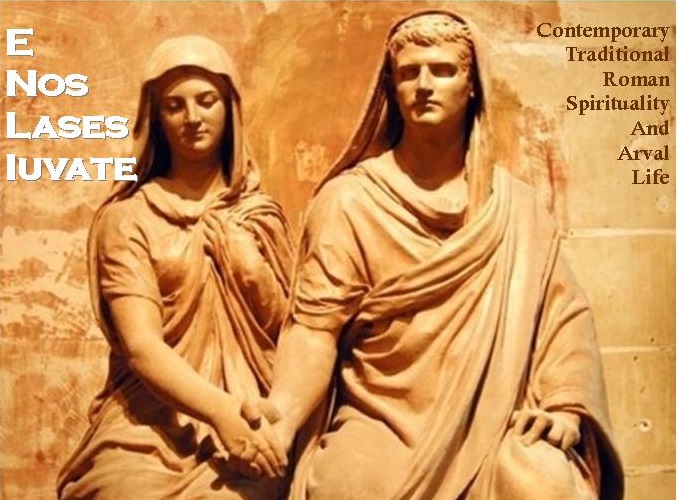The day of April 21st is dedicated to the foundation of Rome and to the Ancient Goddess of Pale. In many blogs there are detailed hystorical descriptions about these importatn festivals. I have written something about it here.
It seems to me quite useless to add something else to this here also because in this blog I'm trying to dismiss, whenever possible, the hystorical rhetoric and to reconstructionism. I have not appreciated also the fact that in Rome these ceremonies have been quite essentially biased on costume parades. Too much folklore; this is a carnival party. That's all.
During a day like this a Cultor and a Cultrix should wonder what these festivities mean for them today, what meaning and sense these festivities may have today wondering also about the value we can assign today to these festivals: which kind of contribution can these festivals provide to our spirituality within the Traditional Roman Religion today? I don't think that insisting on the purification of flocks can be useful or understandable for us (except for someone involved in sheep or livestock breeding).
Anyway. I ask to mayself how it can be possible to spiritually live this day and how this day can contribute to my spirituality for the days to come.
I think that the Traditional Roman Religion today, among others, is a kind of deep spirituality linked to the cult (practice) of the Ancestors. Role and meaning of Ancestors (also as metaphysical concept) strongly inspire this kind of Credo.
The foundation of Rome (its myth and the festivity dedicated to an ancient Goddess) therefore recalls an idea of Ancestors, an idea of Beginning, Origin, the birth of a Religious Tradition. This day evokes a type of primordial humankind where Life is sacred, men and women are strctly close to Gods and Goddesses (in a very broad sense).
We thus remind a Time when every action, gesture, thought were sacred. This is a Time when the urban space where men and women live is co-shared with Gods and Goddesses. Every man and woman are priest and priestess because living is a sacred action, the city-village is a Temple, every form and expression of the Reality reveals and discloses the Divine Presence. And men and women can easily perceive the sacred Breath (flamen) of this Divine Presence.
In this primal status there is a pure, immediate, direct, plain elementarity: what is immensely great is like what is immensely small. Above and below are the same.
I think that in this day (rather than dressing masks) it should be better to direct our thoughts toward this concept of primal status which the idea of Ancestors and their cult materialize. We have to regain this deep sense and meaning connected to these festivals, the real idea of Ancestors (a concept we have completely lost) which must inspire our everyday life.
We should daily reflect about these principles.





